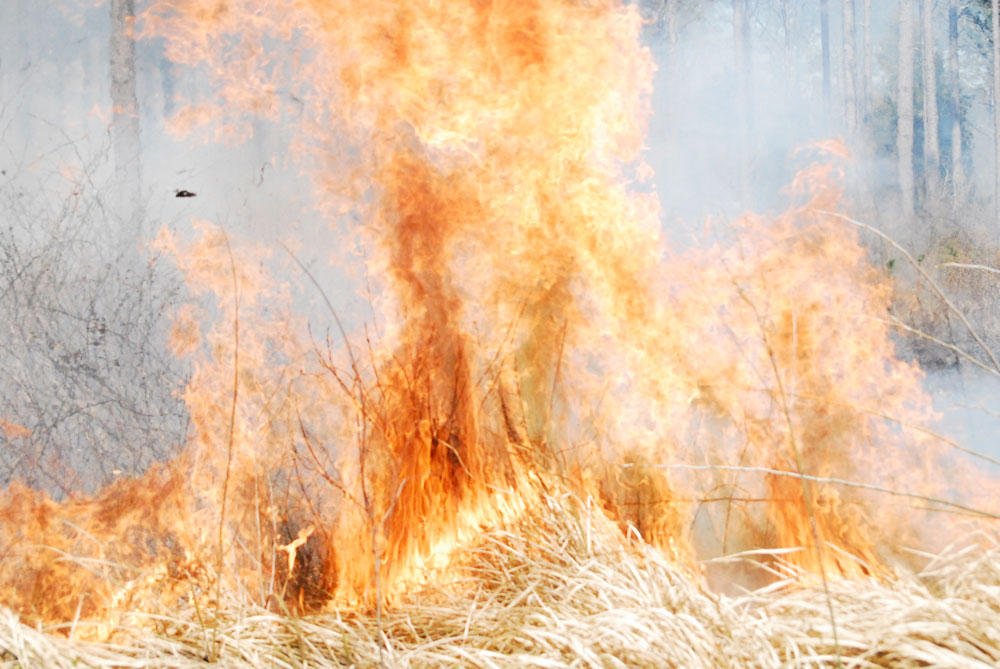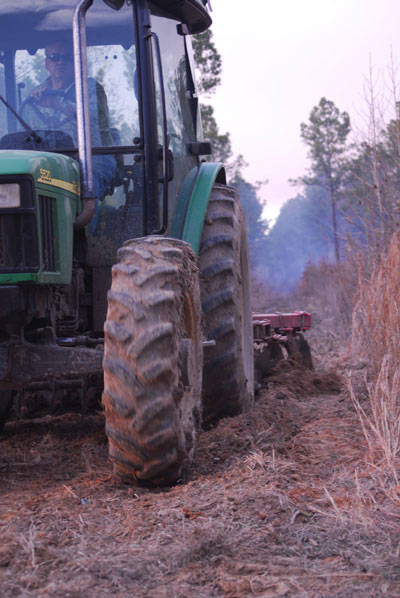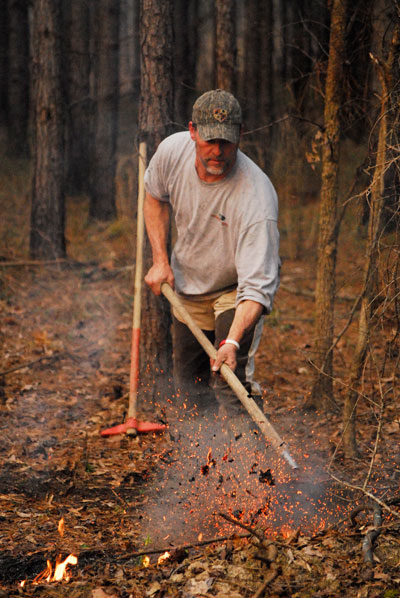While it may sound counterproductive to the average person, controlled burns are actually the safest way to manage overgrowth and promote new, healthy growth in wooded areas, wetlands, crop fields and prairies.
Controlled burns get rid of dead timber and brush, which can easily catch fire and spread an uncontrolled wildfire more easily. In California, for instance, a century's worth of fire suppression has led to unprecedented tree growth in a drought area. This growth is dry, dead and ready to catch on fire easily.
With controlled burns, California can reduce the amount of dead timber in the forests and hillsides to prevent massive wildfires like those seen in 2017 and 2018.
Conducting a controlled burn in specified areas of land not only mitigates possible outbreaks of wildfire by removing possible tinder, but it also does so by promoting the health of the soil. The burnt brush returns nutrients to the land. This leads to healthier, lusher vegetation that does not catch on fire as easily, keeping your land, family and livestock safe.

What is a controlled burn?
A controlled burn, sometimes called a prescribed burn, is the careful planning and execution of fire in a specified section of land.
Many different factors must be considered before conducting a controlled burn, including atmospheric conditions, recent precipitation rates, optimal burning temperatures and natural firebreaks such as creeks, roads, large rock walls or canyons.
The burn usually begins with a back burn, which is the intentional setting of small fires along the firebreak. This will reduce the fuel that the larger control burn will come in contact with when it hits the firebreak area, allowing it to be extinguished more easily.
How a controlled burn is conducted
A controlled fire must be carefully planned and is usually executed in the early spring or late fall.
The fire team will establish a firebreak and set a downwind backfire to create a blackline of burned area, reducing the amount of fuel the primary fire will come into contact with before the firebreak.
Then, the fire team will set a series of head fires, which are carefully monitored and controlled and will burn steadily into the blackline. Fire teams will monitor the sides of the burn, called the handline, to make sure the fire remains confined to the controlled burn area.
Benefits of a controlled burn
 There are several benefits to conducting a controlled burn. The first benefit is safety. By reducing the amount of overgrowth, dead trees and underbrush in an area, it reduces the risk of an area igniting into an uncontrollable wildfire by lightning or campfires. The less fuel fire has, the more quickly it will burn out and the more containable it will be.
There are several benefits to conducting a controlled burn. The first benefit is safety. By reducing the amount of overgrowth, dead trees and underbrush in an area, it reduces the risk of an area igniting into an uncontrollable wildfire by lightning or campfires. The less fuel fire has, the more quickly it will burn out and the more containable it will be.
Another benefit is the promotion of healthy vegetation growth by recycling nutrients into the soil. Depending on your location, the burned land may take a few years to grow back in. But once it does, the new vegetation will benefit from the nutrients leached into the soil by the burned vegetation.
Healthier vegetation is harder to ignite and burns slower than dry, dead vegetation. Healthy vegetation also attracts more game to the controlled burn area.
Some farmers use controlled burns to clear out a field that has been overused and prepare it for new planting in a few seasons' time. If a field is harvested too often, key nutrients in the soil are depleted and, eventually, crops can become unhealthy or stop yielding altogether.
By conducting a controlled burn on a field, the farmer is reinvesting nutrients back into the soil so it can be used for planting again in a few years’ time. When the field is in use again, the crops will be much hardier due to the increased amount of nutrients they have access to.
Some vegetation requires periodic burns to flourish because a burn reduces overgrowth by weeds, invasive tree species and mitigates fungal infections that can infect desirable trees. In fact, Sequoia trees rely on fires to reproduce and fire suppression can limit their growth and regeneration.
While wildfires took care of these issues naturally in the past, much of the land in the U.S. is now bisected by towns and neighborhoods. These populations create a border for wildfires, making it necessary for the path of the fire to be redirected away from towns. Controlled burns are an excellent way to accomplish this.
Controlled burns are also used to reduce greenhouse gas emissions. During a controlled burn, greenhouse gas emissions such as carbon dioxide, nitrous oxide and methane are reduced by the carbon and nitrogen released during large controlled burns.
Requirements, regulations and burn permits
A controlled burn must be carefully planned, executed and regulated. Before conducting a controlled burn, it is best to become familiar with your local requirements and regulations.
Many states require landowners who practice prescribed burning to become certified by taking part in a program. These programs cover essential topics, such as fire behavior, weather conditions and fire tactics.
 Controlled burn teams must also take into account local ordinances, including those which regulate smoke in populated areas.
Controlled burn teams must also take into account local ordinances, including those which regulate smoke in populated areas.
In most states, you are also required to provide sufficient firefighting equipment and manpower to keep the controlled burn within the prescribed area. Many forestry divisions offer equipment, loans and other assistance with planning.
Burns must be conducted during the daytime hours and can never be left unsupervised. In addition, controlled burns may be prohibited during certain times of the year, or during times when the governor issues a burn ban or red flag warning. Typically, these bans and warnings are issued during periods of drought or high winds.
Landowners conducting controlled burns may also have to notify adjoining landowners 60 days prior. Some jurisdictions require that the landowner notify the local forestry department, fire department and other organizations before beginning the controlled burn.
Finally, some jurisdictions may require you to obtain a burn permit 48 hours before starting your burn. Failure to adhere to local regulations can result in significant fines, especially if the fire escapes your control and causes damage to life and property.
Remember, fires are a potentially deadly threat to the forests, wildlife and people living in your vicinity. It is best to err on the side of caution with controlled burns and always make sure you know your local burn requirements and legislation.
Final thoughts
Conducting a controlled burn on your property can be a great way to keep your property safe, your vegetation healthy and your crop fields ready to yield their best harvest.
Fire safety is nothing to skimp on. Check and double check that when you are executing a controlled burn on your property, you have notified all the proper authorities and you have taken as many safety measures as possible to keep the burn under control.






























